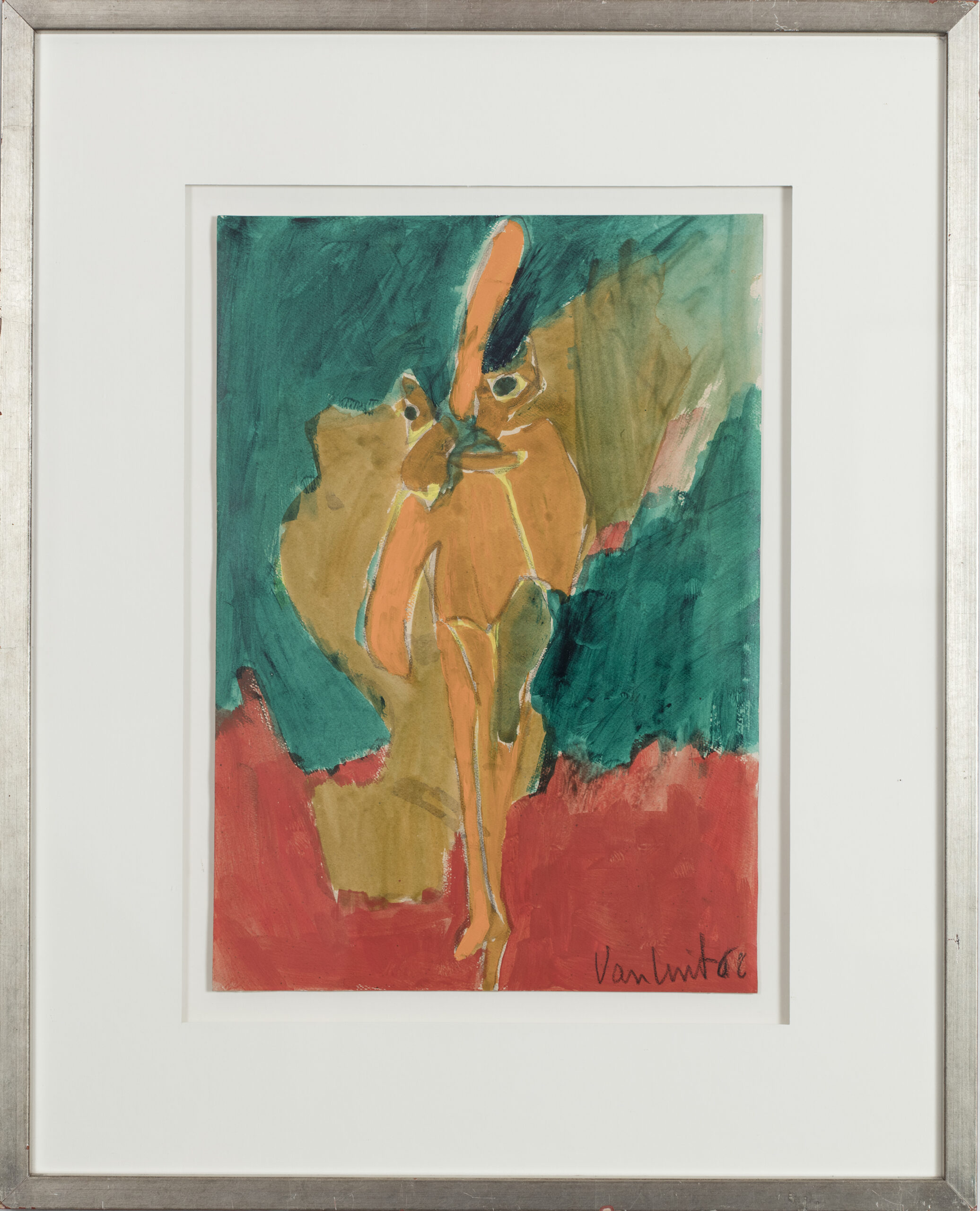Louis Van Lint, born on December 26, 1909, in Brussels, came from a modest family, with a Flemish father and a Walloon mother.
In 1924, Louis enrolled at the Academy of Fine Arts in Saint-Josse-ten-Noode, where he honed his skills in drawing and painting under the guidance of Henri Ottevaere and Jacques Maes. His early works, in a realistic style, depict scenes of interiors, urban and rural landscapes, and reveal a keen sense of color.
In 1938, he made his debut at the Art Jeune exhibition, and in 1940, he co-founded the group La Route Libre with Gaston Bertrand and Anne Bonnet. His first solo exhibition took place in 1942 at the Palais des Beaux-Arts in Brussels. Between 1941 and 1948, he won several awards and participated in numerous exhibitions, establishing himself as a key figure in the Belgian art scene.
In 1945, Louis Van Lint co-founded Jeune Peinture belge, an innovative movement aimed at renewing the vision of painting. Influenced by the French artist Bazaine, he created vibrant works such as “Symphonie en rouge” (1949), which express his emotions in response to nature. His participation in the CoBrA movement from 1948 to 1951 allowed him to explore artistic experimentation.
During the 1950s, he also became interested in geometric abstraction before returning to a more lyrical style focused on nature. His travels in France, Greece, Tunisia, and Spain enriched his work with intense colors and movements that evoke natural forces. His friendship with Hergé, the creator of Tintin, reflects his open-mindedness and influence on other artists, to whom he introduced abstract art.
Despite health issues starting in 1974, Louis Van Lint continued to create and exhibit until his death on December 27, 1986. His last work, “Seuil de l’Inexploré,” embodies his artistic commitment until the end.

Sign up to the newsletter and stay informed about our latest acquisitions and exhibitions:
© Galerie Rousset 2023